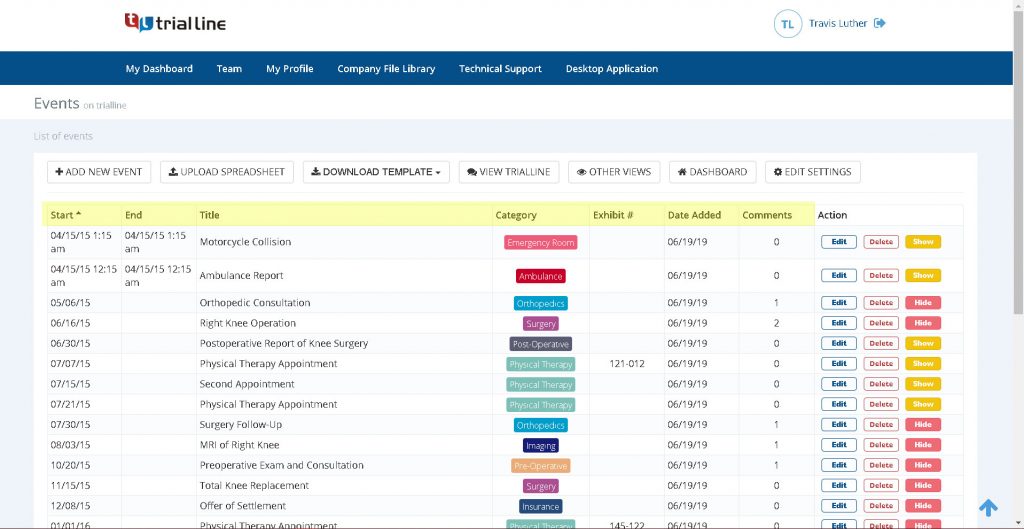You have a complicated legal matter with multiple witnesses, hundreds of facts and thousands of documents. Litigating this matter is a daunting prospect, but you’ve done the work and set yourself up so that your case is well organized and manageable.
You’ve taken that big, imposing matter and broken it down into smaller, more easily managed parts, by creating lists of all of the players and important evidence in your case. And you’ve listed all of the issues that need to be addressed, and linked them to the relevant players and evidence.
Now that you have identified the component parts of your case, it’s time to create a chronology that lays out all of the facts.
Seeing all of the details of your case laid out along a timeline will enable you to better understand the relationships between your component pieces and facts, as well as help you to understand where there are gaps in your knowledge.
TrialLine makes it easy to create detailed fact chronologies quickly. In just a few keystrokes you’ll be able to see the events of your case clearly laid out, along with any supporting documentation you may have.

TrialLine’s other features help you to create specific views that can focus your attention to a particular dimension of your case, and keep detailed notes around each event that can work as important reminders of salient points, or of work that still needs to be accomplished.
Here’s how you should build your fact chronology in TrialLine:
Using Fact Chronologies to Document What You Know
First create a new TrialLine:
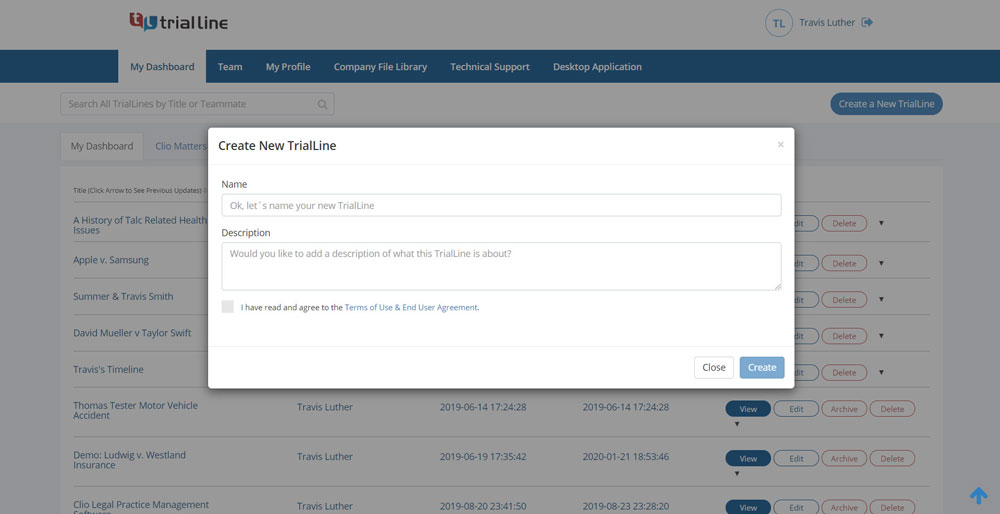
In that TrialLine, start by laying out all of the most basic facts of your case. Create events on each of the dates something occurred in your case, and give them titles that clearly communicate what exactly happened:
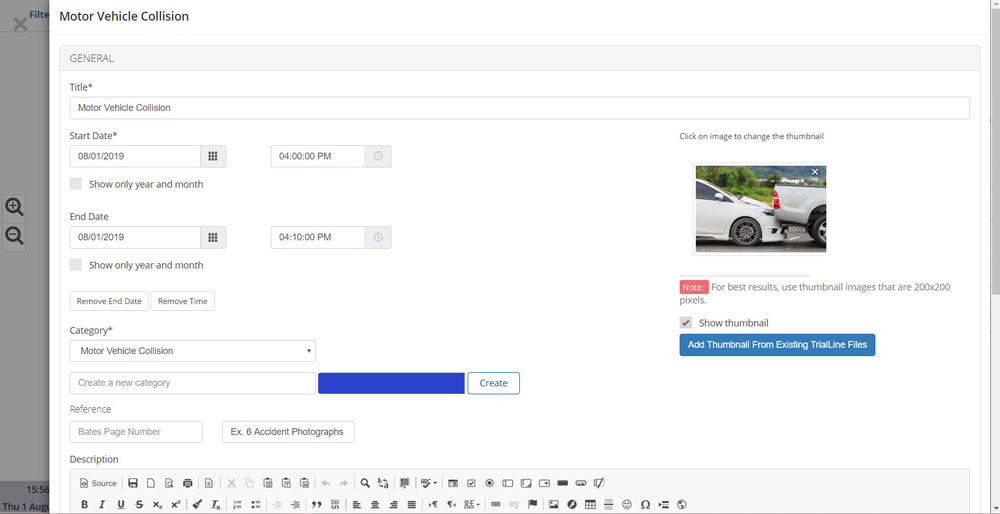
Be careful to include all of the important details in the description for each fact entry:

Attach any supporting documentation that you might have, directly to each event, so that it can be visible in just a couple of clicks:
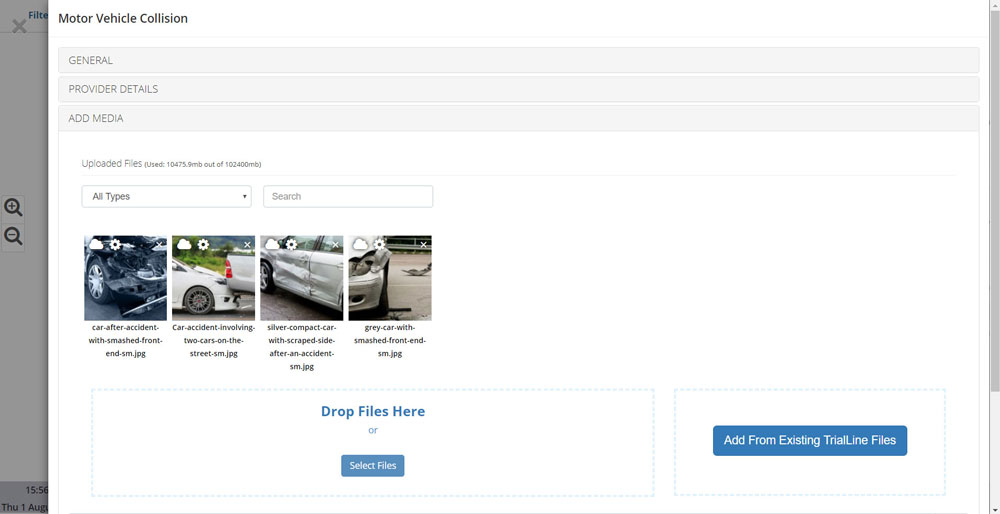
Now take a look at the list of issues you created previously, one issue at a time. Think about what facts you have that are related to each issue. Make sure those facts are added to the TriaLine, and that all of the other relevant events you are aware of, have been added as well.
Leave detailed notes for each event. Document your thought process. By attaching these notes to each event, you’ll be able to segment your thinking which will keep issues manageable, and you’ll also stay more organized:

Using Fact Chronologies to Document What You Don’t Know
Once you have all of the relevant facts and details on the timeline, now it’s time to think about what facts and information you wish you had. This is where brainstorming and using your imagination comes into play. Look at your list of issues and the facts and people associated with them.
Create a new tag in your TrialLine and give it a name that designates that the events that have that tag attached to them, are facts that you wish you had (“Prospective Facts”) or facts that are currently in dispute (“Disputed Facts”):

Look back at your issues list again, and go issue by issue to keep it in small chunks. It can help to think backwards. Start with your main goal, then break it up into components, step by step. This is my goal. How do I get there? What is in the way? How do I get around it? Again, make sure you take good notes and document your thoughts as you go along.
Also think about the information the opposing counsel is probably looking for. What do you imagine the other side would want. What would you want in their situation? Put yourself in their shoes and think strategically.
Logic and the facts at hand will dictate what they’ll be trying to accomplish, just like it does for you. If you can see from their perspective, not only will you be better able to guess their moves before they make them, but you’ll also understand how they might try and attack your case.
You may not be able to find support for all of the facts you wish you had. But seeing it all laid bare along your TrialLine will enable you to have a better idea not only of where you’re trying to go, but how you’re going to get there.
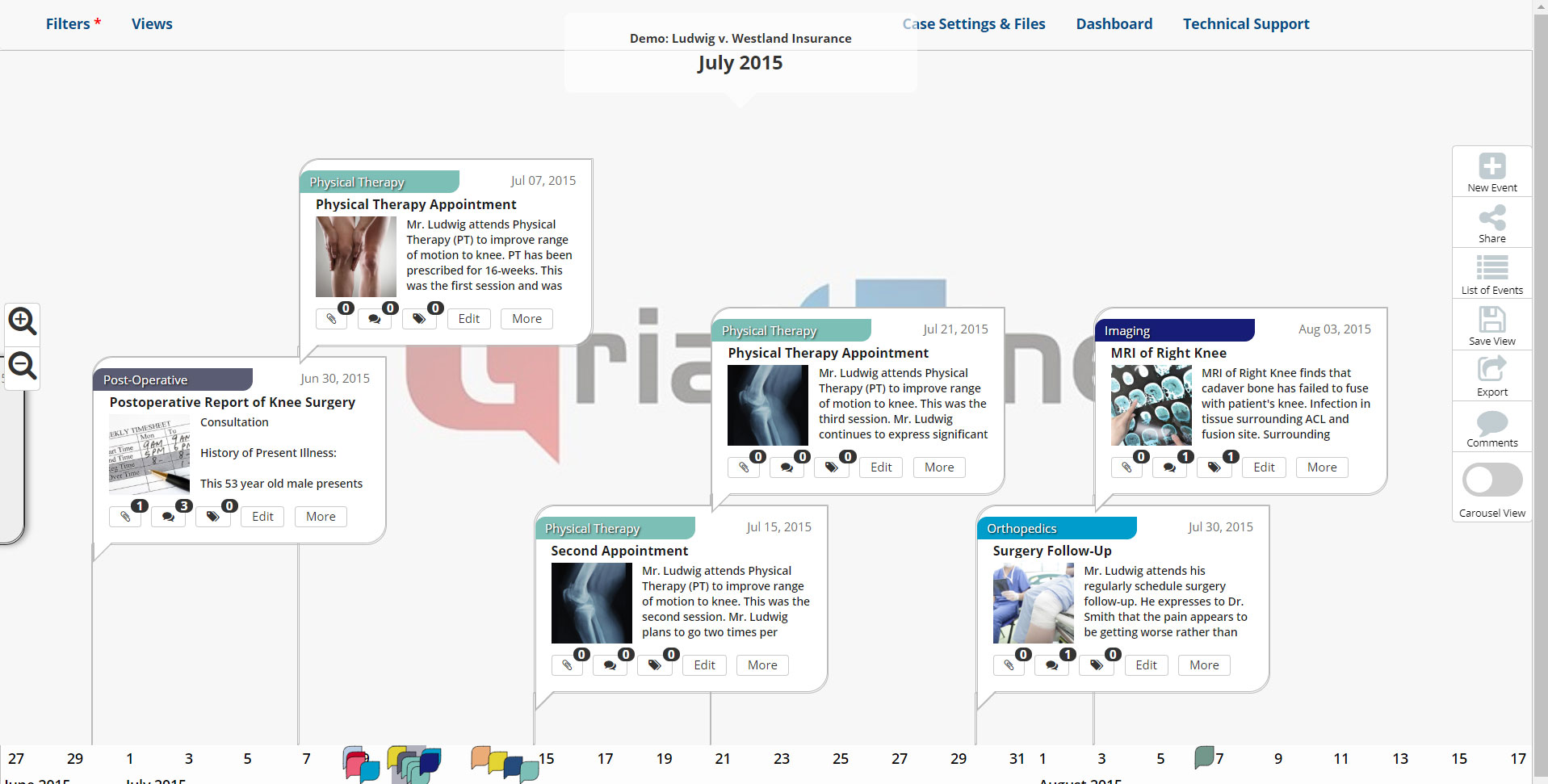
Try TrialLine Fact Chronologies for Free Today



